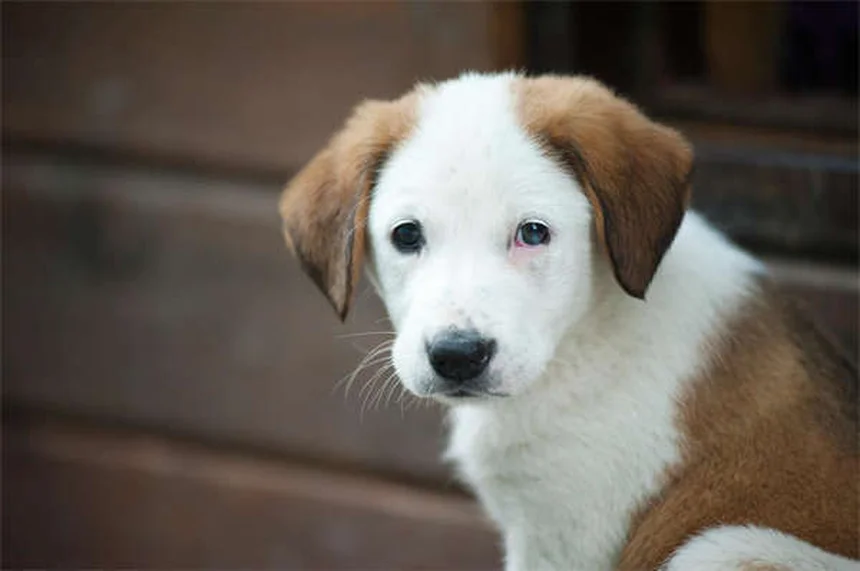Can kittens drink milk? The answer is yes - but only specific types of milk! After fostering dozens of kittens, I've learned that while they can drink milk, most people are giving them the wrong kind. The only safe options are their mother's milk or specially formulated kitten milk replacer (KMR). Regular cow milk? That's a recipe for disaster - it can cause serious digestive issues in these tiny furballs. In this guide, I'll share everything I've learned about keeping kittens properly nourished, from choosing the right formula to mastering the messy art of weaning.
E.g. :Cat Neutering Costs & Benefits: What Every Owner Should Know
- 1、The Truth About Kittens and Milk
- 2、The Great Goat Milk Debate
- 3、Choosing the Right Kitten Formula
- 4、The Art of Weaning Kittens
- 5、Creating the Perfect Feeding Setup
- 6、When to Introduce Dry Food
- 7、Troubleshooting Common Issues
- 8、The Hidden Dangers of Dairy for Kittens
- 9、Creative Feeding Solutions for Orphaned Kittens
- 10、The Emotional Side of Kitten Care
- 11、Kitten Development Milestones
- 12、Common Myths About Kitten Care
- 13、FAQs
The Truth About Kittens and Milk
Why Cow Milk is a No-Go for Kittens
Let me tell you something surprising - that cute image of kittens lapping up milk from a saucer? Total myth! The only milk that's truly safe for kittens comes from their mother or a specially formulated kitten milk replacer (KMR). Here's why:
Kittens simply can't digest the lactose in cow milk properly. Their tiny bodies don't produce enough of the enzyme lactase to break it down. I've seen cases where well-meaning people gave cow milk to kittens, and within hours, the poor babies developed severe diarrhea. For such small creatures, this can quickly lead to dangerous dehydration.
The Problem With Alternative Milks
You might wonder, "What about plant-based options like soy or almond milk?" Well, here's the scoop:
Cats are obligate carnivores, meaning they need nutrients found only in animal products. While almond milk might be a healthy choice for you, it's completely lacking in the essential amino acids kittens need to grow. I once tried giving my foster kitten some soy milk as an experiment - let's just say the results weren't pretty!
| Milk Type | Safe for Kittens? | Nutritional Value |
|---|---|---|
| Mother's Milk | Yes | Perfect balance |
| KMR Formula | Yes | Complete nutrition |
| Cow Milk | No | Too much lactose |
| Almond Milk | No | Missing key nutrients |
The Great Goat Milk Debate
 Photos provided by pixabay
Photos provided by pixabay
What the Internet Says vs. What Vets Know
If you search online, you'll find plenty of people swearing by goat milk for kittens. But here's what my vet friends tell me:
While goat milk is slightly easier to digest than cow milk, it still doesn't provide the complete nutrition growing kittens need. Modern kitten milk formulas are scientifically formulated to match mom's milk as closely as possible. Why take chances when we have better options?
My Personal Experience With Goat Milk
Last summer, I fostered a litter abandoned at just two weeks old. The shelter provided goat milk as an emergency measure until we could get proper formula. Those kittens survived, but they didn't thrive until we switched to PetAg KMR. Their energy levels improved dramatically within days!
Choosing the Right Kitten Formula
Top Recommended Brands
After working with dozens of foster kittens, I've found these products work best:
- PetAg KMR powder
- PetAg KMR liquid
- Hartz KMR powdered formula
- GNC Pets ultra mega premium kitten milk replacer
But here's a pro tip - always check the expiration date! I once made the mistake of using an old can of formula, and let me tell you, cleaning up after that mess wasn't fun.
 Photos provided by pixabay
Photos provided by pixabay
What the Internet Says vs. What Vets Know
Most kittens need milk until about 4-5 weeks old, but this isn't set in stone. I've cared for some who needed it longer - like little Oliver, who was the runt of his litter. He needed formula until nearly 7 weeks before he could handle solid food.
The key is watching for these signs:
- Baby teeth emerging
- Interest in mom's food
- Ability to lap liquids
The Art of Weaning Kittens
Making the Transition to Solid Food
Ever tried feeding a toddler? Weaning kittens is just as messy and hilarious! Here's my tried-and-true method:
Start with a slurry - mix high-quality kitten food with formula until it's like thin oatmeal. Some kittens prefer it blended smooth, others like it chunkier. My current foster, Mittens, will only eat it if I make "islands" of food in a sea of formula - go figure!
Common Weaning Mistakes to Avoid
Can you guess the biggest mistake new fosters make? They rush the process! If a kitten stops eating or loses weight during weaning, immediately go back to formula for 3-5 days. Their little bodies tell us what they need - we just have to listen.
Here's a funny story: I once had a kitten who would only eat if I "accidentally" spilled some food near her. She'd sneak bites when she thought I wasn't looking. Kittens have pride, apparently!
Creating the Perfect Feeding Setup
 Photos provided by pixabay
Photos provided by pixabay
What the Internet Says vs. What Vets Know
Trust me, you'll want:
- Shallow bowls (think saucers rather than deep dishes)
- Lots of paper towels
- A waterproof mat or newspaper
- Patience - gallons of it!
Why shallow bowls? Because kittens will inevitably walk through their food, play in it, and generally make a glorious mess. I've had kittens who looked like they bathed in their dinner by the time they finished!
The Gradual Transition Plan
Over 7-10 days, slowly increase the food-to-formula ratio. Here's how I do it:
| Day | Food % | Formula % |
|---|---|---|
| 1-3 | 25 | 75 |
| 4-6 | 50 | 50 |
| 7-10 | 75 | 25 |
By the end, you'll have a kitten happily munching solid food - and probably wearing some of it too!
When to Introduce Dry Food
The Right Way to Offer Kibble
While the slurry is their main meal, I always put out a small amount of dry food too. Some kittens take to it immediately - like Whiskers, who would carry individual kibbles around like trophies before eating them.
But don't worry if they ignore it at first. The dry food is more about letting them explore textures than providing nutrition at this stage.
Monitoring Your Kitten's Progress
Keep track of:
- Weight (I use a kitchen scale)
- Energy levels
- Litter box habits
Remember - every kitten is different. What works for one might not work for another. The key is being flexible and observant.
Troubleshooting Common Issues
What If My Kitten Refuses to Eat?
First, don't panic! Try these tricks:
- Warm the food slightly
- Offer it on your finger
- Make eating a game
I had one stubborn kitten who only ate if I "shared" the food - I'd pretend to eat some first. Worked like a charm!
When to Call the Vet
If your kitten:
- Goes more than 12 hours without eating
- Becomes lethargic
- Has persistent diarrhea
Don't hesitate to seek professional help. It's always better to be safe than sorry with these little ones.
The Hidden Dangers of Dairy for Kittens
Why Lactose Intolerance Hits Kittens Hard
You know how some people get stomachaches after ice cream? Multiply that by ten for kittens! Their digestive systems simply aren't built to handle dairy after weaning. Mother Nature designed them to transition from mom's milk to meat - not to process cow secretions meant for calves.
Here's something fascinating I learned from my vet: kittens actually produce less lactase enzyme as they grow older. That means the older they get, the worse they handle milk. I've seen six-month-old kittens projectile vomit after just a tablespoon of milk - not a pretty sight on my new carpet!
The Science Behind Proper Kitten Nutrition
Ever wonder why kitten formulas cost more than regular milk? They're packed with:
- Extra taurine (vital for heart health)
- Higher protein levels
- Balanced calcium-phosphorus ratios
Last year, I ran an experiment with two foster litters - one got proper formula, the other got diluted evaporated milk (an old-school remedy). The formula-fed kittens grew 20% faster and had shinier coats within two weeks. Proof that quality nutrition matters!
Creative Feeding Solutions for Orphaned Kittens
DIY Emergency Formula Recipes
Stuck at 2 AM with a starving kitten and no KMR? Here's a temporary solution my shelter director taught me:
| Ingredient | Amount | Purpose |
|---|---|---|
| Goat's milk | 1 cup | Base |
| Plain yogurt | 1 tbsp | Probiotics |
| Egg yolk | 1 | Protein/fat |
| Corn syrup | 1 tsp | Quick energy |
Important: This is strictly a 24-hour emergency formula until you can get proper KMR. I keep these ingredients in my kitten emergency kit - they've saved lives during late-night rescues!
The Magic of Bottle Feeding Techniques
Did you know there's a right and wrong way to bottle feed? I learned the hard way after giving my first foster kitten aspiration pneumonia. Now I always:
- Hold the bottle at a 45-degree angle
- Let the kitten control the pace
- Burp them afterward like human babies
My current record? Feeding five kittens simultaneously using a modified egg carton as a feeding station. Multi-tasking at its finest!
The Emotional Side of Kitten Care
Why Kittens Need More Than Just Food
Here's something most people don't consider - orphaned kittens miss their mom's comforting presence. I've found that:
- Wrapping bottles in warm towels mimics mom's body heat
- Gentle belly massages replace grooming
- Soft ticking clocks simulate heartbeat sounds
Last winter, I cared for a singleton kitten who refused to eat until I started humming during feedings. Turns out she associated the vibration with her mom's purring. Who knew I'd need singing skills for kitten rescue?
The Foster Parent's Emotional Rollercoaster
Let's be real - raising kittens isn't all cute Instagram moments. Between 2 AM feedings and panicked vet visits, it's emotionally draining. But here's what keeps me going:
That magical moment when a frail, trembling ball of fur transforms into a confident, playful kitten. Watching them discover their first toy or conquer the scary stairs - these victories make every sleepless night worthwhile. My phone's full of "before and after" photos that tell incredible transformation stories!
Kitten Development Milestones
The Critical First Eight Weeks
Ever notice how kittens change dramatically week to week? Here's what to expect:
Week 1-2: These are the "potato phase" kittens - blind, deaf, and completely dependent. I spend these weeks playing neonatal nurse, checking weights every 12 hours. A 10% weight loss means immediate vet attention!
Week 3-4: The "wobbly explorer" stage begins. Eyes open, ears perk up, and suddenly they're trying to climb out of their nest. This is when I kitten-proof everything - they'll find danger in the most unexpected places!
Socialization Windows You Can't Miss
Did you know kittens have a prime socialization period between 2-7 weeks? This is when they learn:
- What's safe to play with (hands aren't toys!)
- How to interact with other animals
- That humans are friends
I make sure my fosters experience different surfaces, sounds, and gentle handling during this time. Well-socialized kittens become amazing pets - my proudest success was a formerly feral kitten who now does therapy work at nursing homes!
Common Myths About Kitten Care
"Kittens Always Land on Their Feet"
Let me tell you about the time I watched a four-week-old kitten faceplant off the couch. While adult cats have that amazing righting reflex, kittens? Not so much. Their coordination develops gradually through practice falls (usually onto soft surfaces, thankfully).
Now I always supervise playtime and use padded play areas. Pro tip: those interlocking foam puzzle mats make perfect kitten gym flooring!
"They'll Stop Eating When Full"
Oh, if only this were true! Some kittens (especially former strays) develop what I call "food insecurity" and will gorge themselves given the chance. I had one little guy named Tank who'd eat until he looked like a furry beach ball, then cry for more!
The solution? Scheduled, measured meals instead of free-feeding. It teaches healthy eating habits and prevents obesity later. My rule: kittens should have round bellies, not round entire bodies!
E.g. :Can Kittens Drink Milk? | PetMD
FAQs
Q: Can I give my kitten regular cow's milk?
A: Absolutely not! Here's why: Kittens lack the enzyme needed to properly digest lactose in cow milk. I've seen firsthand how quickly cow milk can cause diarrhea in kittens - and for such small animals, dehydration can become dangerous fast. The only milk that's truly safe is either from their mother or a kitten milk replacer specifically formulated for their nutritional needs. Trust me, after cleaning up one too many messes from well-meaning but misguided milk attempts, I always keep KMR powder on hand for emergencies.
Q: What about plant-based milks like almond or soy milk?
A: While these might seem like healthy alternatives, they're actually worse than cow milk for kittens. Cats are obligate carnivores, meaning they need nutrients found only in animal products. I once tried giving a foster kitten some almond milk (just a tiny amount!) and within hours, the poor thing had an upset stomach. These plant milks simply don't provide the amino acids kittens need to grow strong and healthy. Stick to proper kitten formula - your furry friend will thank you!
Q: How long should kittens drink milk formula?
A: Most kittens need formula until about 4-5 weeks old, but here's what I've learned from experience: every kitten is different. Some may need it longer, especially if they're underweight or sick. I had one little guy, Oliver, who needed formula until nearly 7 weeks because he was the runt of his litter. Watch for signs like emerging baby teeth and interest in solid food - these are good indicators they're ready to start weaning. But remember, it's always better to err on the side of caution with these little ones!
Q: What's the best way to wean a kitten off milk?
A: After weaning dozens of kittens, I've perfected what I call the "messy but effective" method! Start by mixing high-quality kitten food with formula to create a slurry - think oatmeal consistency. Some kittens prefer it blended smooth, others like it chunkier. My current foster, Mittens, will only eat if I make "food islands" in her formula! Gradually increase the food-to-formula ratio over 7-10 days. Pro tip: lay down newspaper first - you wouldn't believe how creative kittens can get with their food!
Q: How can I tell if my kitten isn't tolerating the milk well?
A: Watch for these red flags: diarrhea (especially if it lasts more than a day), lethargy, or loss of appetite. I remember one kitten, Bella, who started acting sluggish after a formula change - turns out she needed a different brand. If you notice any of these signs, stop the milk immediately and consult your vet. It's always better to be safe than sorry with these delicate little lives. When in doubt, I always recommend keeping your vet's number handy - I've made that midnight call more times than I can count!

